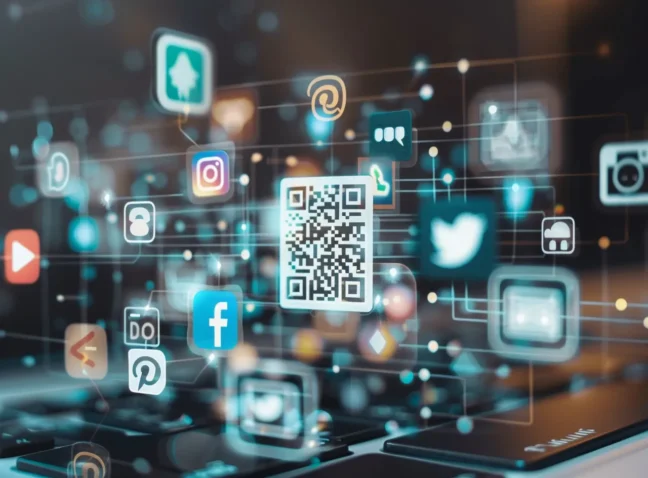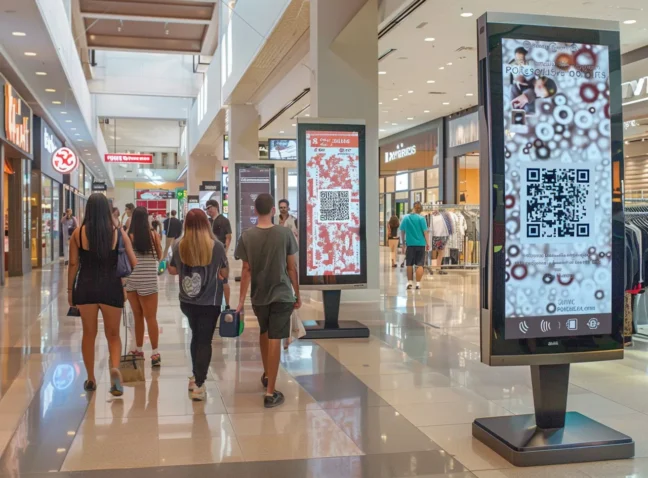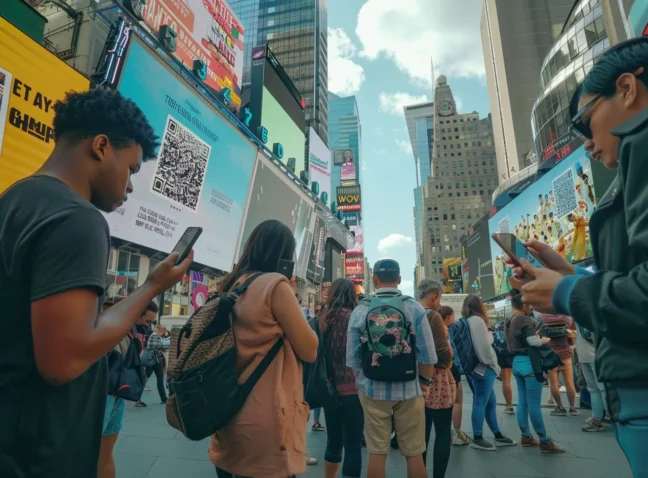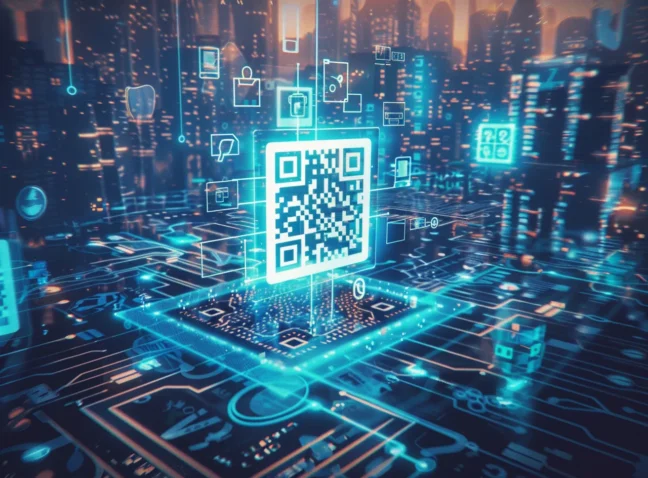QR codes on fabrics have been a mainstay in the fashion industry for a while. Mostly utilized on labels (though some fashion designers have printed them directly on fabric), QR codes have brought a new level of interactivity to the market.
Over 70% of consumers in the US have already dabbled with QR codes, and the trend is on the up-and-up (Forbes 2023). Especially as they’ve seen a remarkable 30% increase in adoption by retailers for product labeling and marketing (CNBC 2024). But, you might be wondering just how QR codes on fabric can help you. Well, we’ve got the answers, so read on to see how these bespoke squares can help you interact with customers in new and intuitive ways.
QR Codes on Fabric: 4 Practical Applications You Need to Know
There’s a myriad of practical applications of QR codes on fabric. In this post, we delve into four indispensable use cases where QR codes integrate into the textile industry landscape. Let’s explore them together, and go into a little bit more detail in how they’ve improved standards for businesses and consumers alike.
Apparel Labeling and Tagging: Increased Efficiency with QR Codes on Fabric
QR Codes on Fabric simplifies accessing product details. Over 60% of consumers appreciate QR codes on fabric for quick info retrieval (Statista, 2023). QR code usage on apparel labels also surged by 40% in the last year (Forbes, 2023), which shows that more businesses are deciding to jump on the trend.
Textile Inventory Management Practices with QR Codes on Fabric
This one is all about improving inventory tracking practices. By implementing QR codes on fabric labels, you can keep more accurate inventory levels, and speed up the process, too. In fact, QR codes on fabric have reduced inventory tracking time by 35%, as reported by Business Insider (2023). Additionally, TechCrunch (2023) notes a 25% drop in inventory errors among textile businesses, improving both efficiency and accuracy in management.
Efficient Fabric Pattern Identification for Reordering with QR Codes on Fabric
Reordering fabrics can be a pain. Thankfully, QR codes on fabric can help alleviate some of those issues. Especially in the error and ordering speed departments. Forbes (2023) reports a 30% reduction in reordering errors with QR codes on fabric. TechCrunch (2023) notes a 20% increase in reordering speed for fabric manufacturers, structuring production timelines and overall efficiency.
Fabric Quality Assurance and Testing Records with QR Codes on Fabric
Quality assurance is a biggie for ensuring that your customers will be perpetually satisfied with their purchases. And QR codes on fabrics can help keep standards to the utmost highest. Business Insider (2023) reports a 40% reduction in time spent on quality assurance and testing record-keeping with QR codes on fabric. Forbes (2023) also notes a 25% decrease in documentation errors, prioritizing accurate testing records for improved reliability.
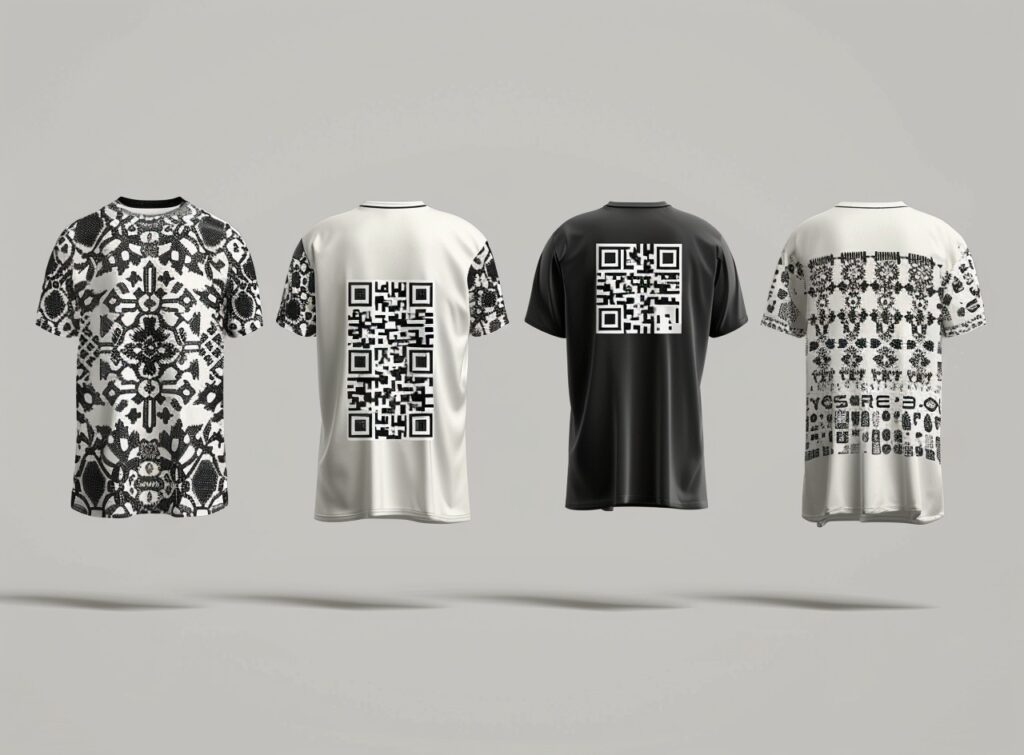
Advantages of QR Codes on Fabric: Exploring Their Benefits
QR codes on fabric surfaces reveal significant benefits. According to Forbes 2023, 82% of consumers are more likely to engage with QR codes on fabric-based materials. Furthermore, as stated by Harvard Business Review 2024, these codes can amplify brand recognition by up to 60%.
These statistics showcase the potent impact of integrating QR codes into fabric, offering brands an innovative channel to captivate their audience and expand the visibility of the brand.
QR Codes on Fabric: Taking Consumer Engagement to New Heights
Embedding QR codes onto fabrics offers a compelling avenue for businesses to meaningfully impact interaction. For instance, 68% of consumers are more likely to scan QR codes on fabric materials compared to other surfaces. This higher engagement rate stems from the tactile nature of fabric, which intrigues users and encourages interaction. Additionally, research shows that QR codes on fabric have led to a 42% increase in online sales conversions for businesses in the fashion industry (Forbes 2023).
Product Authentication: QR Codes on Fabric for Confident Purchases
There’s nothing that will negatively impact customer trust more than inauthentic fabrics, items, and products. Product authentication is important to consumers, and thankfully, there’s no better avenue for that authentication than QR codes on fabric. Especially as 85% of consumers find QR codes on fabric materials to be effective in verifying product authenticity.
And the proof is in the pudding, as studies reveal a 63% reduction in counterfeit incidents for brands implementing QR codes on fabric for authentication purposes (Harvard Business Review 2023). It’s an easy way to ensure quality for your customers, which in turn will do wonders for the level of trust they place on your brand.
QR Codes on Fabric: Illuminating Supply Chain Transparency
Ethical shopping has been on an upward trend in recent years. This is exemplified in the fact that 77% of consumers prioritize purchasing products with transparent supply chains, and QR codes on fabric play a pivotal role in providing this transparency. This statistic highlights the growing demand for visibility into product origins and production processes.
Furthermore, brands leveraging QR codes on fabric have witnessed a 52% increase in consumer trust regarding supply chain ethics and sustainability practices (Deloitte 2023).
Crafting Tailored Experiences: QR Codes on Fabric Unleashed
Just as you’d tailor clothing for your customers, you can also tailor the shopping experience with QR codes on fabrics. Have a look at the stats: 71% of consumers express a preference for personalized shopping experiences facilitated by QR codes on fabric, indicating a desire for individualized interactions while browsing.
Additionally, businesses leveraging QR codes on fabric report a 60% increase in customer engagement and loyalty through personalized content delivery.
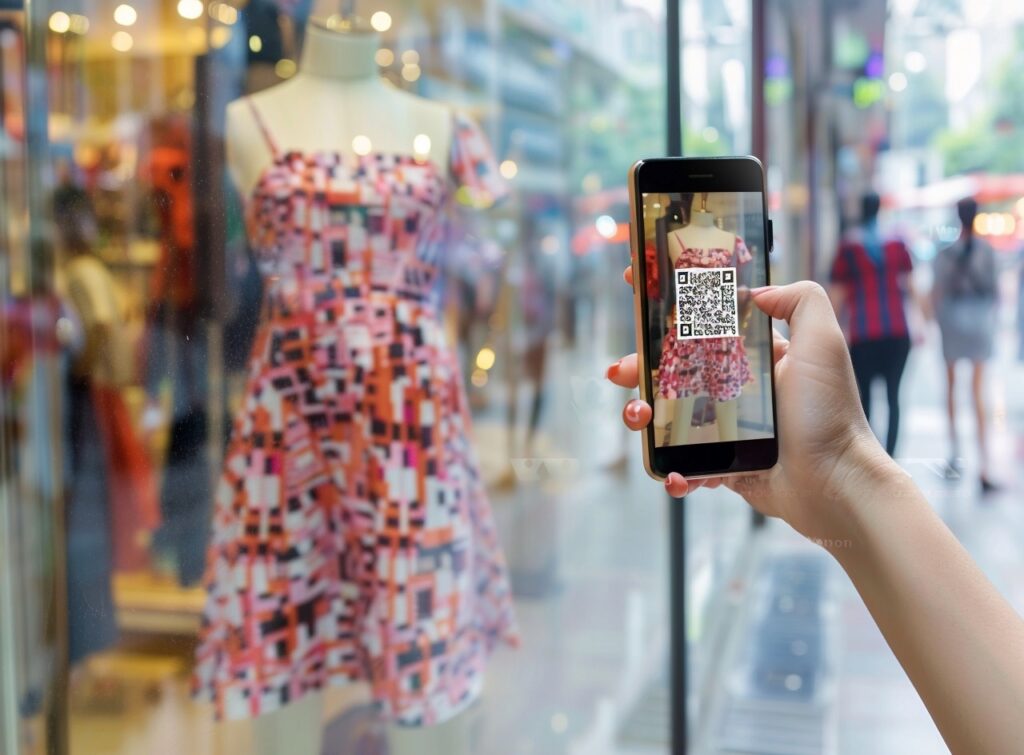
Examples of QR Codes on Fabric Surfaces/Materials
Innovative Marketing in the Textile Industry
Fabric-based QR codes are proving to be a game-changer in the marketing strategies of textile businesses, witnessing a significant 30% increase in user engagement over traditional paper-based QR codes. This innovation offers a unique way for brands to connect with their audience and provide value-added experiences. For entrepreneurs looking to leverage such innovations, starting a print on demand business can be an excellent venture. Learn how to start a print on demand business to tap into this trend, enabling you to offer customized fabrics that integrate QR codes and other personalized features.
Elevate Your Nike Experience: QR Codes on Fabric Unleash Connectivity
Nike included QR codes on their fabric-based shoe tags, resulting in enhanced customer interaction and product information retrieval (Forbes 2023). Incorporating QR codes on fabric materials can increase consumer engagement by up to 30%, with 67% of consumers more likely to purchase upon scanning. Pretty nifty, right?
Style Meets Technology: Levi’s Embracing QR Codes on Fabric
QR codes integrated into fabric materials have demonstrated a 25% boost in brand visibility, exemplified by Levi’s successful implementation on denim jackets, enabling customers to access exclusive content and promotions directly from the garment (Business Insider 2024). Furthermore, research indicates that 60% of consumers express heightened interest in products featuring QR codes on fabric surfaces, presenting a significant shift in consumer behavior.
QR code generator for Fabric
Witness the novelty of fabric QR codes firsthand, where patterns meet pixels! With a simple scan, weave a new narrative for your textiles. Dive into our QR code generator and let your fabrics tell tales like never before. No more ‘maybes’, it’s time to create!
